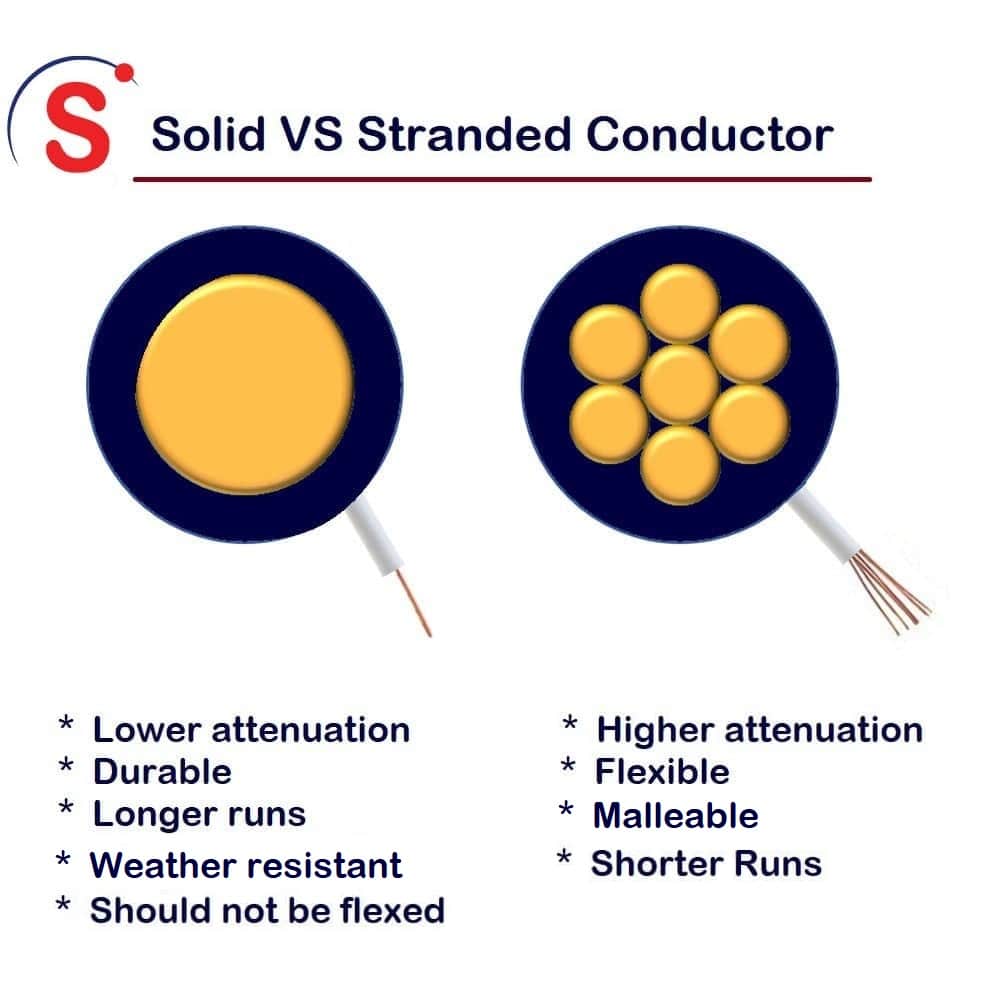Solid Wires, Stranded Wires, And Their Key Differences
Having difficulty figuring out whether you should use solid or stranded wires for your project? Look no further. This article goes deep into the differences between the two main wire types: solid wires and stranded wires. Before making a decision, you must consider the quality, application, characteristics, and price point of each material.
What are Solid Wires?
Solid wire is composed of one piece of single-strand wire. Although it is much more compact, this does not affect its capacity to carry strong currents at a given time. This type of wire is applied where the cabling system does not need to flex.
Benefits of Utilizing Solid Wires
A majority of homeowners lean towards solid wires because they are less expensive than stranded wires. Apart from cheaper production costs, they can still get what they pay for with its superior durability. Its single thick strands of cable increase the resistance that allows it to withstand corrosive conditions.
Here are valuable benefits of solid wires worth considering:
- Distributed Backbone
Solid wires support backbone cabling, which is suitable for performing distributed runs. It can integrate cables between entrance facilities, equipment rooms, and telecommunications closets for both inter-building and intra-building cable connections. - Withstand Extreme Environmental Conditions
Solid wirings can function despite long-term exposure to corrosive elements and adverse environmental conditions. - Affordable
Solid wires cost significantly less than stranded wires. This benefit is one of the main reasons why homeowners and small businesses commonly adapt to these wirings. - Durability
Solid wires are highly resistant to damage, which makes them easier to handle and maintain. These wires comprise a single strand of thick cable, making them more durable than their counterpart.
How Solid Wires are Applied
Solid wirings are conductor cables that implement structured cabling within houses, offices, and other establishments. Many technicians prefer solid wires because they can smoothly penetrate wall jacks and patch panels with just a single conductor involved.
Solid wires are more capable of managing higher currents equipped with rigid materials. As a result, solid wirings can be beneficial to heavy-duty applications and outdoor projects. Here are ideal applications for solid wires:
- Building infrastructures
- Vehicle controls
- Outdoor applications
What are Stranded Wires?
Stranded wires consist of a compressed group of small gauge wires. This compressed group of small gauge wires offers flexibility so they are perfect for projects where the wire routing involves cramped spaces.
Benefits of Stranded Wires
It is easier to direct towards restricted spaces since it has multiple strands of solid wire drawn into thin filaments that intertwine together. Stranded cables remain stable despite several vibrations and flexing for an extended amount of time.
Conductor flexibility is much greater in stranded conductors, making them easier to install.
Here are the valuable benefits of stranded wires worth considering:
- Offers Flexibility
In comparison with solid wires, stranded wires can endure increased amounts of vibrations and bend. They would rarely break due to ultra-thin and fine strands that increase the flexibility of their conductor. - Surface Damage
Even though the stranded wirings encounter scratching or nicking, they cannot get damaged as much as solid wires do. Thus, it is more resistant to any form of surface damage. - More number of strands = more versatile.
Multiple strand counts account for both flexibility and versatility. Regardless of the size of the stranded wire, it is significantly more versatile than solid wires. However, its premier quality makes it more expensive than its counterpart.
How Stranded Wires are Applied
When compared with solid wires, stranded wirings are not as viable for penetrating wall jacks. The thin strands of wires make it difficult to stay in one position when punching down into an insulation displacement connector. However, stranded wires can be more efficient in producing patch cables. With highly flexible wirings, you can roll the stranded wires effortlessly.
As a result, many indoor projects require the calibration of stranded wires to integrate with electrical devices. Here are ideal applications for stranded wires:
- Circuit boards
- Speaker wires
- Electro-mechanical assemblies
Solid Wires VS Stranded Wires: A Direct Comparison
Take a look at the side-by-side comparison between solid wires and stranded wires to determine which one is the right cabling system for the project you have in mind.

Conclusion
Before making a decision on which type of wire to choose, you should take into consideration all of your needs. Between solid wires and stranded wires, select the product that provides complete wiring solutions for your project.
From the upfront costs, returns, environmental factors, and durability applications, the wiring should tick all of your boxes. When we talk about the costs, you can already obtain a durable material at an affordable price with solid wires. This single strand of wire is straightforward, which makes it suitable for outdoor applications. On top of that, solid wires are resistant to damage because of their thickness. This resistance can eliminate the susceptibility to electromagnetic interference when magnetic fields reach the surface of the wire.
However, solid wires are not one for malleability and strength. You may bend solid wires, but the product can break and split in half once you do. Alternatively, you can take advantage of stranded wires for projects that require intricate bending and a great deal of movement. These are applicable for vehicles and electronic circuit boards. Overall, business owners and homeowners can determine the suitable wires even though they are not qualified, electricians or experts.














































